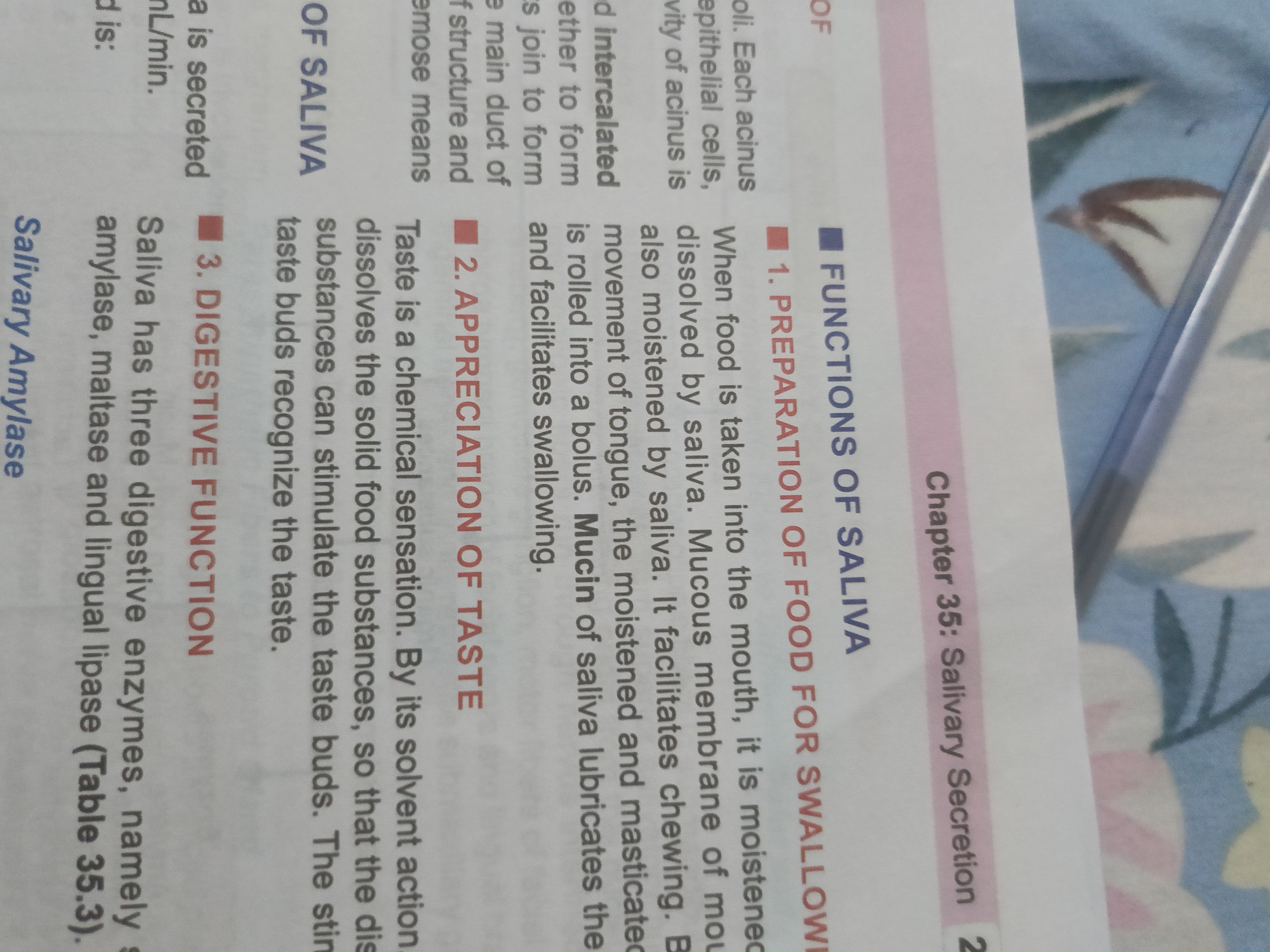What are the functions of saliva in relation to digestion and taste?

Understand the Problem
The question is about the functions of saliva, particularly in relation to digestion and the appreciation of taste. It discusses how saliva facilitates these processes when food is taken into the mouth.
Answer
Moistens and lubricates food, breaks down starches and fats, stimulates taste buds, and maintains oral health.
The key functions of saliva in digestion and taste include moistening and lubricating food for easier swallowing, breaking down starches and fats through enzymes like amylase and lingual lipase, dissolving food substances to stimulate taste buds, and maintaining oral health.
Answer for screen readers
The key functions of saliva in digestion and taste include moistening and lubricating food for easier swallowing, breaking down starches and fats through enzymes like amylase and lingual lipase, dissolving food substances to stimulate taste buds, and maintaining oral health.
More Information
Saliva not only aids in the initial breakdown of food but also plays a crucial role in making sure the food particles can be perceived by our taste buds, thus enhancing our taste experience.
Tips
A common mistake is to overlook the role of saliva in taste perception. Always remember that saliva is essential in dissolving food substances so taste buds can detect their flavors.
Sources
- Salivary Glands: Function, Location & Anatomy - Cleveland Clinic - my.clevelandclinic.org
- Salivary functions in mastication, taste and textural perception - onlinelibrary.wiley.com
- Saliva | Oral Health, Digestion & Enzymes - Britannica - britannica.com